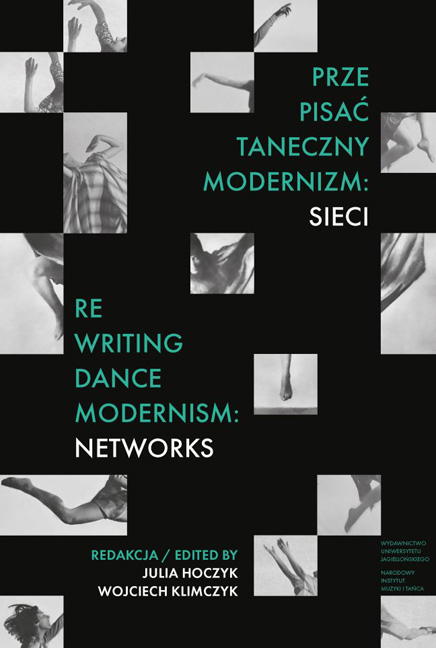Book contents
- Frontmatter
- Contents
- Prze-pisać taneczny modernizm: sieci
- Metodologie: usieciowianie tanecznego modernizmu
- Transmisje: transnarodowe trajektorie tanecznego modernizmu
- Poszerzenia: taneczny modernizm w słowiańskiej Europie Środkowej
- Methodologies: Networking Dance Modernism
- Transmissions: Transnational Trajectories of Dance Modernism
- Expansions: Dance Modernism in Slavic Central Europe
- Biogramy autorów
- Authors’ Biographies
- Indeks / Index
- Miscellaneous Endmatter
- Miscellaneous Endmatter
Sexuality and Queer Sentiment in Mikhail Fokine’s Le Carnaval
Published online by Cambridge University Press: 01 March 2024
- Frontmatter
- Contents
- Prze-pisać taneczny modernizm: sieci
- Metodologie: usieciowianie tanecznego modernizmu
- Transmisje: transnarodowe trajektorie tanecznego modernizmu
- Poszerzenia: taneczny modernizm w słowiańskiej Europie Środkowej
- Methodologies: Networking Dance Modernism
- Transmissions: Transnational Trajectories of Dance Modernism
- Expansions: Dance Modernism in Slavic Central Europe
- Biogramy autorów
- Authors’ Biographies
- Indeks / Index
- Miscellaneous Endmatter
- Miscellaneous Endmatter
Summary
When Mikhail Fokine's ballet Le Carnaval was performed for the first time in St. Petersburg's Pavlov Hall at a Charity Masquerade Ball in early 1910, the role of the Pierrot was not given to a dancer, but to an actor and director, Vsevolod Meyerhold. In his 1906 production of The Fairground Booth (Balaganchik), Meyerhold had created a Pierrot character to great acclaim, and it is likely that Fokine's choice was inspired by the success of the earlier performance. Pierrot's chief preoccupation in Le Carnaval is chasing a butterfly, which was initially performed by Bronislava Nijinska. Nijinska's memoirs describe Meyerhold's Pierrot as follows:
Meyerhold was unforgettable as Pierrot. He made full use of the innovative décor by Léon Bakst, the many folds of the pleated curtains, with concealed slits, draped around the semicircular stage. Pierrot-Meyerhold put these slits to most imaginative use. Each of his appearances onstage produced an effect. First, only his leg would appear through the slit of the drape in a grand developpé, then slowly the whole white body would emerge, the long arms made even longer by long, hanging, white sleeves. Sometimes Pierrot would simply peer through the openings, showing only his white face beneath the conical white hat. Curious, he looked from side to side, searching for the butterfly that had attracted his attention. Walking cautiously on tiptoes, flapping his long white armlike wings high above his head, he held his little white hat with which he hoped to catch the butterfly, me. He followed the flight of the butterfly noiselessly, like a whisper. He ran to hide, from one settee to the other, and then unexpectedly his head peeped out, moving from side to side as he watched the flight of the butterfly. Suddenly he rushed after me, but I disappeared from his sight, off the stage. Thinking the butterfly to be on the ground, he covered it with his white hat, and then clapping his hands he jumped with joy. He lay down on the floor beside his hat and very carefully lifted the edge so as not to damage the fragile wings. With his hands the incomparable artist actually imitated the palpitation of a butterfly caught under his hat, while all his being remained full of anxiety in anticipation of at last having a closer look at the butterfly he admired and coveted.
- Type
- Chapter
- Information
- Re-writing Dance Modernism: Networks , pp. 387 - 404Publisher: Jagiellonian University PressPrint publication year: 2023

